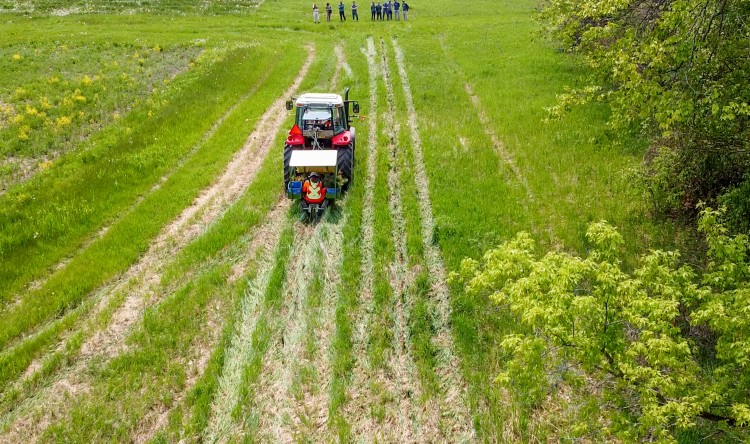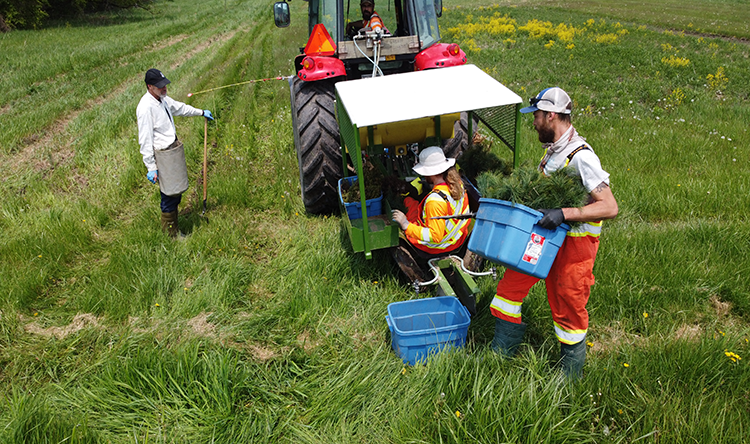How F&S is seeding a climate positive future
The Sustainability Office embarked on its first offset project funded by the University of Toronto’s air travel emissions mitigation initiative—planting 2,300 white pine, white spruce, and red oak seedlings at the Koffler Scientific Reserve.

It is estimated that the planted trees—all species native to the site—will capture and sequester approximately 500 tonnes of greenhouse gas emissions from the atmosphere over the next 50 years, which is equivalent to preventing the burning of 1,100 barrels of oil.
While it took only three hours for a contracted team of four and a mechanical planter to plant the seedlings at the Koffler Scientific Reserve in late May, this event was preceded by months of careful planning.

The Sustainability Office worked with site managers at the Koffler Scientific Reserve to secure an appropriate location. The Lake Simcoe Region Conservation Authority and Forests Ontario also provided crucial input and support.
Albert Trinier, Sustainability Office project manager, described how the Sustainability Office collaborated with members of the Daniels’ forestry faculty to select which tree species to plant and how to optimize the site, not only for carbon reduction, but also for future research and learning.
“One of the project’s primary co-benefits is to create research and learning opportunities—with U of T committed to leveraging the site as a testbed for sustainability-focused practical learning experiences,” Trinier says.
The success of the project will be measured by how much carbon it sequesters over 50 years, its impact on biodiversity, and its contribution to student learning.
“Moving forward, members of the Daniels’ forestry faculty, staff from the Koffler Scientific Reserve, and the Sustainability Office will collaborate to monitor the trees’ health, track their growth over time, measure how much carbon has been sequestered, and see what we can do to create research opportunities for students and researchers at the site,” Trinier says.
The carbon sequestered will also be verified by a third-party—a requirement for every air travel mitigation project.
As the project progresses, it holds the potential to not only improve the environment but also shape the future of sustainability in academia and beyond.
